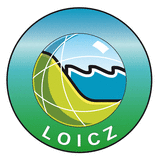Fact sheets provided by ZEF on different topics
The Center of Development Research (ZEF), University of Bonn, has conducted several studies over the past years concerning policies and practices of water resource management in Vietnam and, more precisely, the Mekong Delta. Several outcomes are presented here in brief summaries including references for further reading.
|
Fact sheet 1:
Water Engineering, Agricultural Development and Socio-Economic Trends
by Klaus Vormoor |
The research aimed at identifying socio-economic trends and related impacts on water resources in the Mekong Delta and was based on the analysis of secondary data collected during field work, particularly in the field of water engineering and agricultural development. As a result of extraordinary development during the last three decades, the Mekong Delta has become one of the most productive agricultural areas in the world.
to read more... download (pdf)
|
|
Fact sheet 2:
Pangasius in the Mekong Delta
by Sven Genschick |
One of the most important recent trends in the Mekong Delta has been the development of the Pangasius sector (especially farming and processing), which depends a lot on water for production and is one of the major sources of water pollution. Preliminary findings of the still ongoing research are as follows:
to read more... download (pdf)
|
|
Fact sheet 3:
Water Control and Hydraulic Works: More Consistency Needed
by Simon Benedikter |
Water control has always played a predominant role in Mekong Delta water resources management. Intensive research has been conducted on this aspect, and preliminary findings are as follows: The Mekong Delta is a massive waterscape comprising a dense network of natural rivers/creeks and man-made canals dug over the past three centuries, which mark the recent and most crucial chapter of the delta’s environmental
to read more... download (pdf)
|
|
Fact sheet 4:
Water Engineering and Environmental Impacts
by Simon Benedikter |
The environmental impacts of large-scale infrastructure projects constitute another important aspect with regard to water control planning and management. This dimension will be elaborated in the following:
to read more... download (pdf)
|
|
Fact sheet 5:
Negative Impacts of the Dike Systems in Can Tho City
by Pham Cong Huu |
Flood control constitutes an important aspect of water resources management in the Mekong Delta, in particular in flood-prone areas, where annual floods pose a potential risk for people‟s livelihoods. The local population actively manages floods in order to protect production and assets. The Vietnamese government has also invested substantial sums of money in the construction of so-called “flood control dikes”, which have had severe impacts on the water environment and natural flooding schemes and, to a certain extent, threaten the sustainable development of the Mekong Delta.
to read more... download (pdf)
|
|
Fact sheet 6:
Community-Based Organisations and Local Water Management
by Simon Benedikter, Gabi Waibel, Nguyen Duy Can |
Water constitutes the core resource for local livelihoods and regional development in Can Tho City. Since a significant number of community-based organisations emerged in Can Tho City in the mid-1980s and in recent years, a survey was conducted in order to identify the relevance of these organisations for local water resources management. The emergence of community-based organisations is linked to a set of policy reforms, Doi Moi (renovation), which paved the way for economic liberalisation and administrative reforms in 1986, and profoundly revised the constitutional framework for water resources management. Following the introduction of the first water law in 1998, state management functions were divided in order to separate water resources management from water services, while a new ministry was set up to implement the law.
to read more... downlaod (pdf)
|
| Fact sheet 7: Flood Control and Wild Fish Decrease by Judith Ehlert |
The research focused on local knowledge of living with flooding as well as coping with the decrease in wild fish resources. The characteristics of the flood regime have changed in line with growing human interference into the natural ecosystem of the Mekong Delta. Mounting water control through flood embankments has facilitated the shift from floating rice to high-yield second or triple rice crops and fostered the economic well-being of the region in general. Most houses are constructed on residential dike lines and are therefore safe from inundation, which makes life much more convenient. In the past, ‘living with flood’ meant total dependency on and the adaptation of cultivation to the weather and the availability of water. In contrast, today’s flood is totally subordinated through human control, although the intensification of production inevitably goes hand in hand with high socio-ecological discrepancies.
to read more... download (pdf)
|
| Fact Sheet 8: Traditional and Modern Flood and Weather Forecasting by Judith Ehlert |
Flood and weather forecasting were investigated as part of the research on living with flooding. This study showed the following results. Being a traditional rice cultivating area, farmers’ environmental knowledge on flood and weather patterns has developed out of the necessity to organise agricultural production efficiently. The cultivation of floating rice species, for example, was well adapted to the annual flood, since the rice stalk grew high enough and in tune with the levels of rising water. Agricultural production was first and foremost dependent on the weather.
to read more... download (pdf)
|
| Fact Sheet 9: Access to Clean Water in the Peri-Urban Areas of Can Tho City by Nadine Reis |
The peri-urban areas of Can Tho City are divided into areas with access to piped water schemes and areas without. Research revealed that in both areas clean water availability depends primarily on the financial capacity of a household. In network areas, the financial burden consists of buying a water meter and necessary pipes, which are the prerequisites for connecting to the water supply station. In areas without piped water schemes, access to clean water also requires financial means, e.g. for buying bottled water (a very rare case), drilling a private well and/or constructing and providing prerequisites (roof type, jars) forrainwater collection and storage.
to read more... download (pdf)
|
| Fact Sheet 10: Exploring Knowledge Transfer: Water Supply Industry in Can Tho City by Quy Hanh Nguyen |
Severe pollution caused by intensive agricultural production and environmentally uncontrolled industrial expansion has counteracted traditional water collection methods in Can Tho City and beyond. Further, since piped water networks are insufficient, purified drinking water has been identified as an alternativesource for drinking water although it is rather expensive for rural inhabitants. A 2007 German-Vietnamese survey revealed that purchased purified water is the most popular drinking water source in the peri-urban community of An Binh (Herbst et al. 2009: 225f). In view of demand, the purified water supply industry in Can Tho City is growing continuously, as the following chart illustrates.
to read more... download (pdf)
|
| Fact Sheet 11: Water Pollution and Law Enforcement in Can Tho City by Nguyen Thi Phuong Loan |
In order to ensure the sustainable management of water resources, Vietnam has recently started to introduce a legal framework for the water sector. The Law on Water Resources No. 08/1998/QH10 (LWR), issued in 1998, has created the foundation for a legal system on water resource protection in Vietnam. In recent years, the legislative framework on water resources management has developed further. To date, more than 300 water-related regulations have been issued and often amended to meet the requirements of the country’s development and international integration. Particularly, normative documents, plans and policies on environmental issues and water pollution control are amended continuously.
to read more... download (pdf)
|
| Fact Sheet 12: Administrative Reforms: Changing Scales and Limitations to Planning by Gabi Waibel |
Due to population growth and administrative reforms, planning and state management administrative units are continuously changed and adjusted in Vietnam. For all of these administrative units, data on socio-economic de-velopment is collected by the state apparatus throughout the country. Local administrative staff submits local statistics to higher authorities, and then provincial and national offices compile the data and produce annual reports, which serve as a database for the definition of planning targets. Moreover, these data are also used for monitoring activities and the analysis of long-term change and de-velopment processes. Changes in the scale of reference might therefore have a number of (un)expected effects.
to read more... download (pdf)
|
| Fact Sheet 13: Knowledge Cluster Building in the South of Vietnam by Tatjana Bauer |
Knowledge constitutes an important factor for the development of sustainable solutions and for water resources management in the Mekong Delta. One significant aspect in this regard is how knowledge production is being organised. Looking at the south of Vietnam, Ho Chi Minh City (HCMC) represents one of Vietnam’s major emerging knowledge clusters, followed by the much smaller cluster of Can Tho City in the Mekong Delta. Knowledge clusters occur as a result of policy decisions, the availability of well-educated people, the accessibility of infrastructure and the presence of knowledge-producing organisations such as universities, colleges, research institutes, government research agencies and knowledge-intensive companies.
to read more... download (pdf)
|
| Fact Sheet 14: Proximity Matters in Vietnam – How to Access Information by Tatjana Bauer |
Researchers rely on different sources of information to upgrade their knowledge, exchange ideas and solve emerging research questions based on the acknowledged findings published by other researchers. The scientific output of research projects should be made publicly available to users in order to prevent redundant research and to drive innovation. Publications such as books or periodicals including scholarly journals, magazines and newsletters provide updated results on which future research proposals should ideally be based.
to read more... download (pdf)
|




